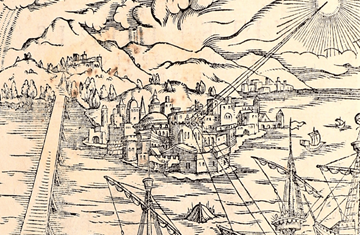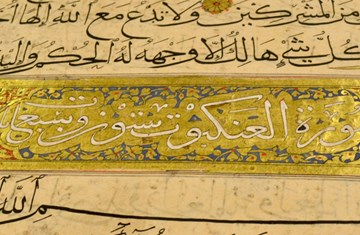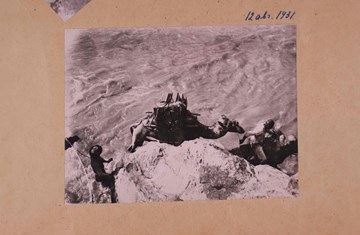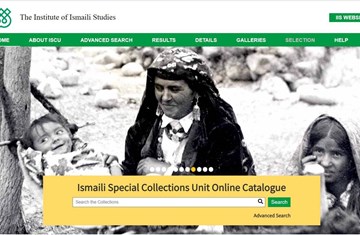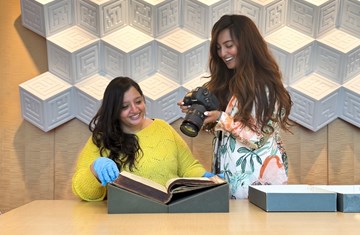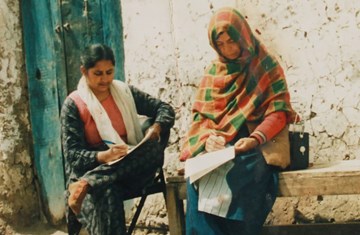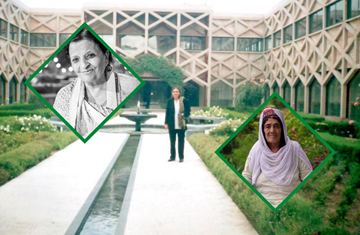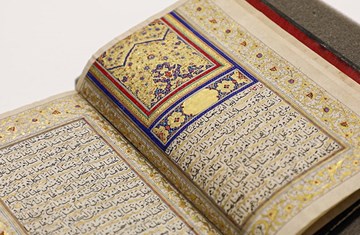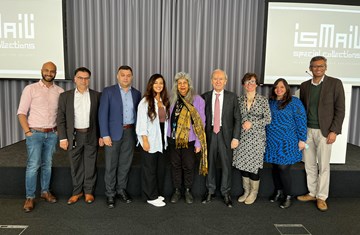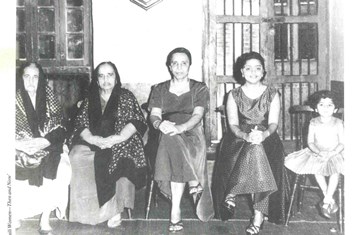Special Collections: Women Behind the Lens
In celebration of Women’s History Month, we go behind the lens of the video series, Islamic Heritage Past and Present, released by Ismaili Special Collections Unit (ISCU) in collaboration with Department of Communications and Development (DCD) last year and explore the perspectives of two women who worked on the series behind the scenes, Rehana Virani (DCD) and Naureen Ali (ISCU).
Rehana supports the work of DCD as a producer of multimedia content and resources using the media of photography, video and graphic design.
Naureen works in ISCU as a cataloguer. Along with collections care, her work focuses on managing the Collections Management System for ISCU and cataloguing a range of materials.
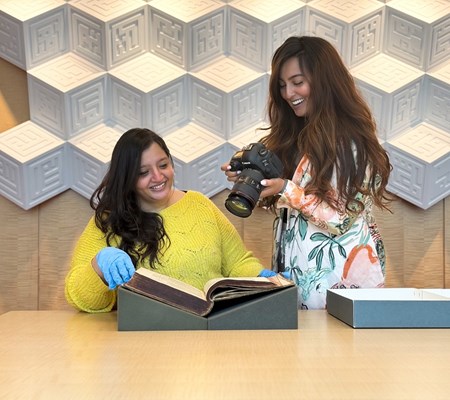
Naureen and Rehana photographing Ibn Haytham's Book of Optics
Photo by Aqil Dhanani.
What has working on this series helped you discover that you didn’t know before?
Rehana: During the first episode, I felt like Dr Daftary was teaching me, directly instead of speaking to the camera. One of my favourite manuscripts, Itenerarium Benjaminis, posed a particular challenge: because it’s so small and Dr Daftary could only open it a little bit. I had to find creative angles to capture its intricate printing. Some of these manuscripts are a thousand years old; how do you show that authenticity and that age? For the most recent episode, we had to find new ways to work with natural light because we can’t shine bright lights on the manuscript.
Naureen: Similar to Rehana, I find it fascinating how an object can be brought to life (and light) when scholars, videographers and the people working on different collections engage with it creatively. The series has helped us flex our creative muscles while discovering how much goes on in the editing process from looking into connected items from within our own collections to finding connecting images and sourcing them while collaborating with other repositories.
What opportunities has this project brought forth for you?
Rehana: With this series, I’ve learnt a lot about diacritics and their usage. I’ve also had to be very patient. Because I can’t read Arabic scripts, I have to work with a team to read and interpret the manuscript and identify supporting materials. This is also a new way of editing for me: I had to work closely with ISCU to make sure that our videos were transcribed and edited correctly. I still can’t tell the difference between the left and right half-circle modifiers!
Naureen: During the course of my work, I have found a printer’s mark from a seventeenth century rare book to be an inspiring symbol of the collaboration involved in the material production of knowledge. As per one perspective, it is said to depict a scholar near a vine-entwined elm tree bearing the fruit of knowledge. The image, along with the Latin phrase non solus (not alone) is meant to represent the collaboration of scholars and publishers in creating and then disseminating knowledge. Working on this video series project brought forth opportunities to appreciate the various parts of collaboration involved in the creation of knowledge such as working with different scholars, also learning about different parts of the video creation process such as videography, photography and editing was an important opportunity.
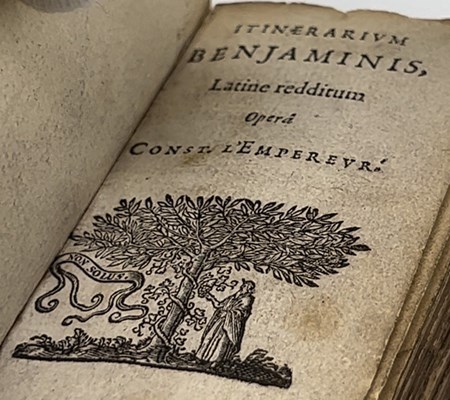
The printer's mark from Itinerarium Benjaminis, Benjamin of Tudela (1633)
Courtesy of ISCU.
What has this helped you discover about each other’s work that you didn’t know before?
Rehana: There’s a lot of work that goes into sourcing manuscripts from our collection and sourcing images from our sister institutions. When we sit together to review edits, Naureen would not only explain the correct spelling and diacritics, but also the history of these manuscripts and the history behind the support materials. It’s not just about showing manuscripts, we have to get the right images and get the right music and make sure everything fits together. I love when Naureen gets excited about these heritage materials! Her passion fuels mine.
Naureen: Through the project, I have a newfound appreciation of the extent of the work that goes into the filming and editing process because Rehana makes it look so seamless from the outside! Whatever the filming challenge a heritage material might pose, Rehana has a solution for it!

